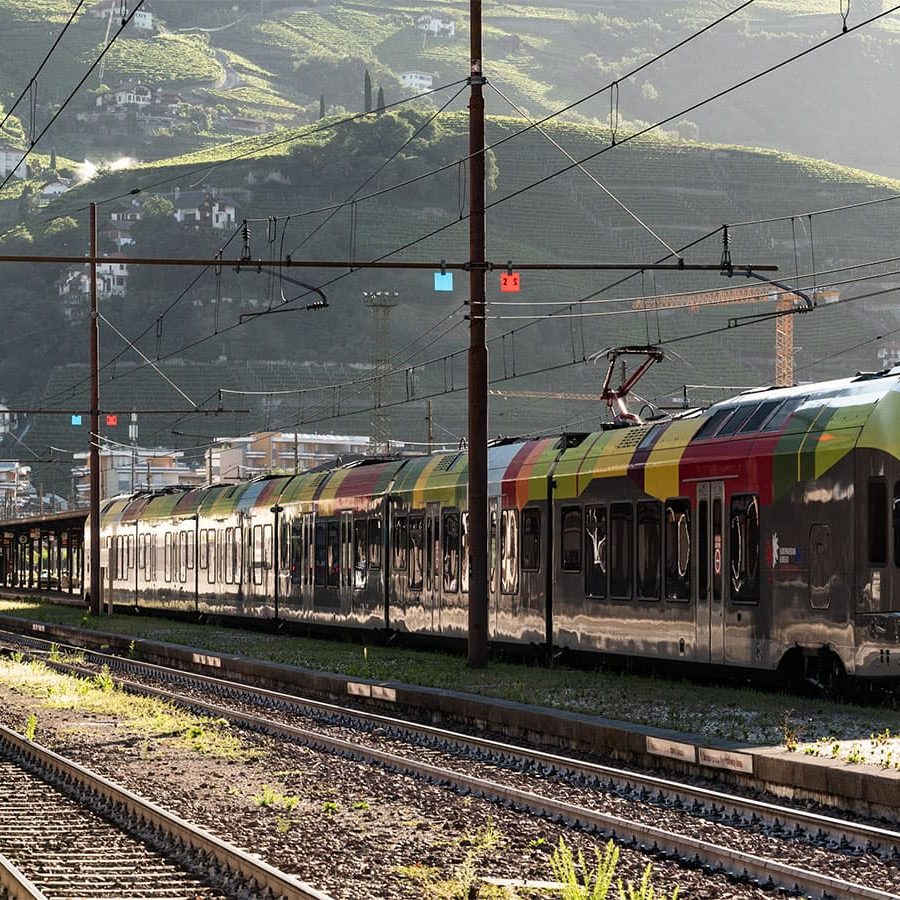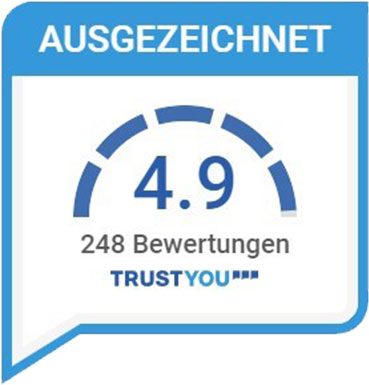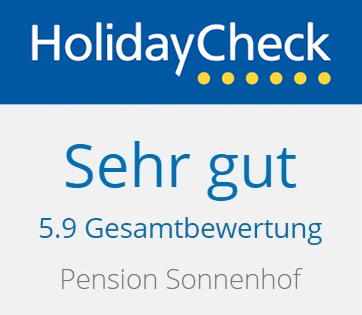Free travel by train from the South Tyrolean border!


Free travel by train from the South Tyrolean border!
The ski and alpine region Gitschberg Val Giovo is an El Dorado for nature lovers, outdoor enthusiasts and culture-loving holidaymakers. Just where the Isarco Valley and the Pusteria Valley merge, you will spend your holiday in front of a marvellous mountain backdrop at the foot of Mount Gitschberg (2,510 m). The Pension Sonnenhof in Maranza is the perfect starting point for hikes in the alpine region Gitschberg-Val Giovo, in the idyllic Fassa Valley and to the charming Fane Alm. In winter, the green mountain pastures turn into snow-covered ski slopes. In Maranza, you’ll find the valley station of the cable car ‘Nesselalm’, which in only 15 minutes takes you to the ski area on Mount Gitschberg. Groomed cross-country ski trails and well-prepared natural toboggan runs make your holiday in the ski and alpine region Gitschberg Val Giovo perfect during the winter months.
The ski and alpine region Gitschberg Val Giovo is an ancient cultural area. Medieval castles and magnificent palaces rise at the entrance to the Pusteria Valley on steep rocky outcrops and in charming villages. With the Rio di Pusteria Lock in the valley floor, the medieval castle of Rodenegg and the historic alpine village of Fane Alm, there are attractive excursion destinations in the area around the Pension Sonnenhof. Take a walk through the village of Rio di Pusteria in the valley floor and discover romantic churches and old farmsteads on the Maranza Plateau. A trip to the ancient episcopal city of Bressanone takes you to the medieval town centre with its winding alleys and historic arcades. The baroque cathedral, the episcopal palace and the White Tower in the city centre are among the most popular sights in the 1,100-year-old alpine city.
The more than 1100-year-old city of Bressanone is the gateway to the sunny south. The old town with its distinctive arcades, the cathedral and the episcopal palace exude an incredibly special flair. In spring you may enjoy a delicious sundae on the cathedral square and look out over the still snow-covered slopes of Mount Plose.
Strolling through the old town, you will discover the culture of many centuries. Particularly worth seeing is the cathedral, a mighty baroque building, the characteristic white tower of the parish church of St. Michael and the cloister with its fresco-decorated arcades.
In December, you must visit the traditional Christmas market on the cathedral square. Many stalls with handicrafts, local food as well as hot mulled wine are sure to get you in the Christmas spirit.
Just north of Bressanone, surrounded by vineyards, lies the Monastery of Novacella. In the Augustinian Canons’ Monastery, the baroque collegiate church with frescoes by Matthäus Günther is particularly worth seeing, as is the library with valuable old manuscripts.
When visiting the Monastery of Novacella you must try the excellent in-house wines, you will be amazed…
The historic alpine village ‘Fane Alm’ is a place full of romance, surrounded by a breathtaking mountain panorama. At an altitude of 1,740 metres above sea level lie ancient farmsteads, inns and huts that were built centuries ago in traditional wooden construction. No other alpine village in South Tyrol is quite as charming. Next to residential huts made of gnarled wooden beams lie old cattle stables and hay huts. Fragrant alpine meadows stretch around the old farmsteads on the Fane Alm and behind them the mountain slopes rise steeply. Fearing the plague, many residents of the lower villages fled to this alpine village in the Middle Ages. Today, the alpine village ‘Fane Alm’ is an extremely popular hiking destination for vacationers in South Tyrol.
In the past, the idyllically situated 'Fane Alm' has served as a backdrop for various film and television productions. Many episodes of the popular German TV series "The Mountain Doctor" were filmed in the alpine village as well as various war films. The small mountain chapel dates to 1898 and offers an attractive photo motif against the impressive mountain backdrop. Furthermore, three rustic alpine taverns invite you to enjoy South Tyrolean specialties.
In summer, hikers and nature lovers are drawn to the Fane Alm, where the Milk Festival offers an incredibly special event highlight in the charming alpine village. During this event you will learn interesting details about the traditional dairy farming in this alpine region and you will have the opportunity to taste fresh alpine milk and selected cheese specialties. The Fane Alm is also the starting point for spectacular high-altitude hikes in the mountains. A charming tour takes you to the Wilde Kreuzspitze, whose peak, at 3,132 metres, towers over the surrounding mountains. You may reach the South Tyrolean alpine village via the so-called Milk Trail, which begins in the village of Valles. Information boards along the way contain interesting details about traditional milk production in the high altitudes of South Tyrol.
In the market borough Rio di Pusteria you can stroll, enjoy a cappuccino and go shopping. The old middle-class houses in the centre of the village tell its story and if you are interested in culture you can visit the “chiusa”. Already in 1269 it was used as a street and valley blockade. It was once used as boarder between the county Görz and Tyrol. Today it is the perfect location for cultural events.
The landmark of the market town of Rio di Pusteria is the Rio di Pusteria Fortress, which was built in the Middle Ages as a roadblock and customs station. The building stood on the border between the County of Gorizia and the County of Tyrol. The old walls were later converted into a hunting lodge and during the Tyrolean Wars of Independence the fortress served as a defensive fortification. In summer, you can visit the historic building as part of a guided tour during your holiday in Rio di Pusteria. In addition to the Rio di Pusteria Fortress, impressive palaces invite you to visit. The Kandlburg Palace dates to the 17th century and once served as the seat of the Counts of Wolkenstein. The former customs officers once had their seat in the Straßhof Residence, which lies on an old trade route.
The municipality of Rio di Pusteria awaits you with a wide range of leisure activities at any time of year. A game of mini golf, a visit to the Alpinpool in Maranza and a trip to the wild and romantic Fane Alm will provide variety and great fun. A walk along the trail 'Pfunderer Höfeweg' and a bike ride through the unspoilt Altafossa Valley are immensely popular with young and old. In winter, the ski area Gitschberg-Val Giovo with 44 kilometres of excellently groomed slopes invites you to enjoy endless fun in white powder snow.
The castle of Rodengo is situated high over the canyon of the Rienza. It was built by Friedrich von Rodank in the 12th century and passed on to the family of the minstrel Oswald von Wolkenstein in the 16th century. Part of the castle is still inhabited by Wolkenstein’s descendants. The castle’s most special properties are the Iwein frescos discovered in 1972. This cycle of frescos is considered the oldest profane mural painting of the German language area after Hartmann von Aue’s epos.
You should definitely visit the chapel of Saint Michael, the weaponry hall, the garden and the “Lauterfressloch” in which Matthias Perger, “the Lauterfresser” was captured. From the beginning of May until mid October the castle can be visited from Sunday to Friday. You can book tours and bigger groups can even book tours with the countess Wolkenstein.

